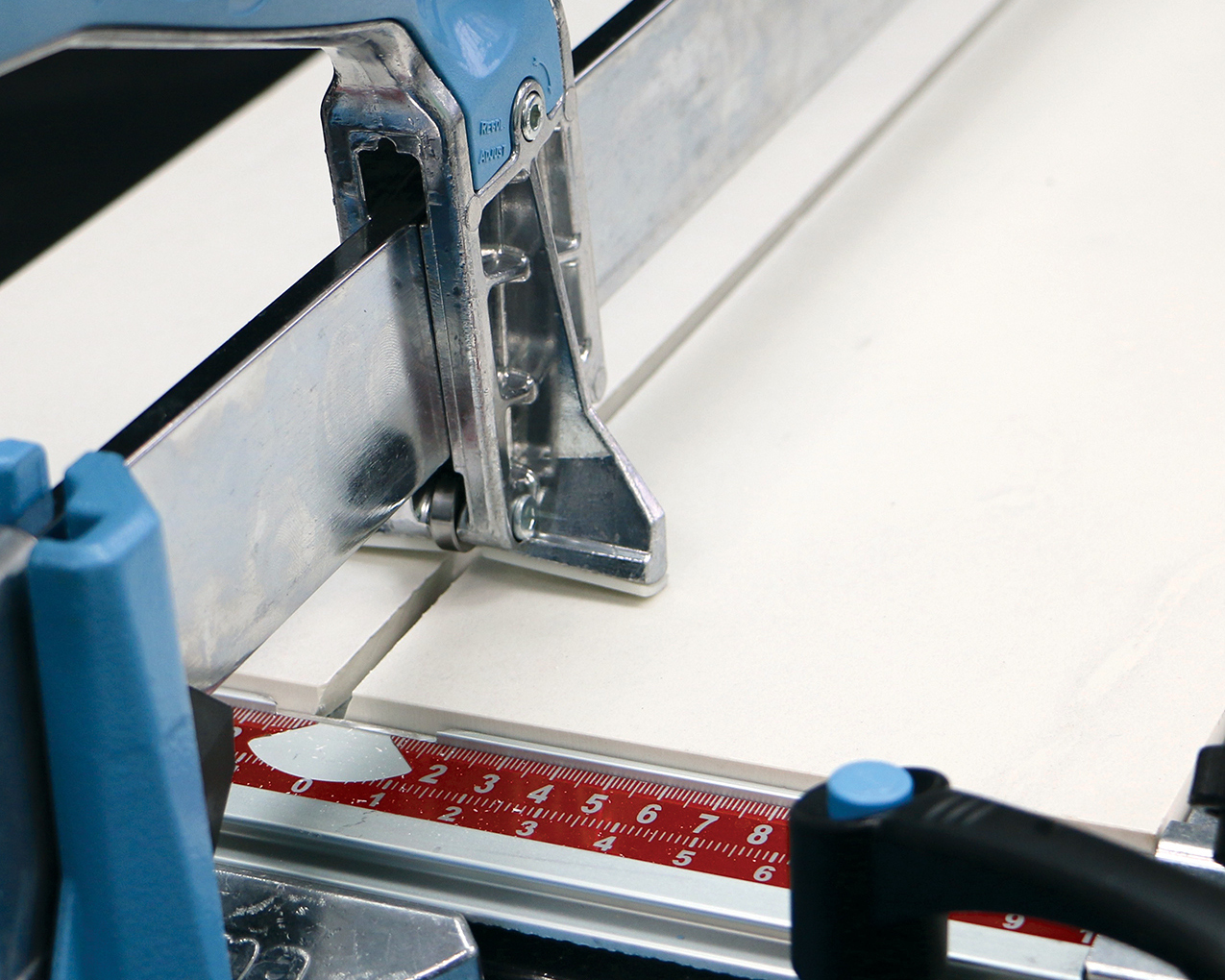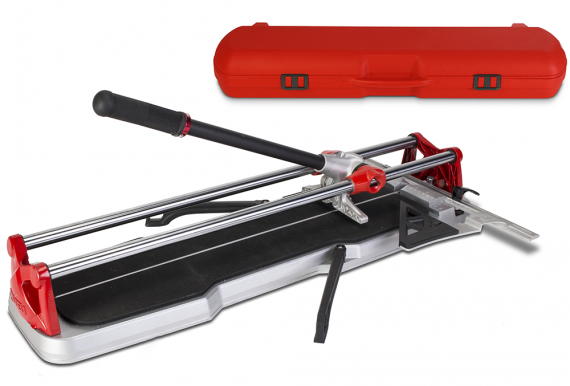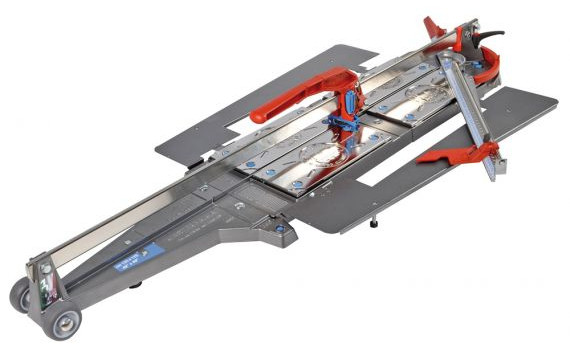
A Guide for Buying the Right Tile Cutter
Updating your flooring or wall tiles in your home can give it a fresh new look, but getting your space to look exactly as you imagine takes time and the right tools. It is always best to be as prepared as possible to prevent your project from truly looking like a DIY-project, instead of a professional job. Of course, you will need a plan from start to finish, and it begins with buying the right tile cutter or saw. This guide for buying tile cutters can help you understand what your options are, and which professional tiling tools are right for your project.
The Difference between a Tile Cutter vs. Tile Saw
When it is time to begin your tile cutting project, you may be wondering whether you should choose a tile cutter, or a tile saw. A tile cutter is a manually operated tool, is simple to use, and does not require a power source. It scores a straight line across the tile surface and the pressure on both sides of the breaker helps the tile break. Tile cutters come in a variety of sizes and are lightweight.
Tile saws, on the other hand, use a diamond blade to make tile cuts. They generate a lot of heat while in operation and feature a water reservoir that sprays the blade and tile to keep them cool and reduce the amount of dust that is produced. Tile saws are better used for thick marble tiles or mitre cuts on porcelain.
Choose the Right Types of Tile Cutter
The first thing you need to consider when beginning your tiling project is the type of tile cutter you should use. There are two options available: manual and electric.
Manual Tile Cutters
A manual tile cutter may be the best piece of equipment if you are doing a smaller tiling project. These tools tend to be more affordable than electric power tools, and they are not weighed down with strength and reinforcement, which would be needed for a bigger project. Smaller jobs focus more on precision cutting, and a manual cutter can achieve this well. Smaller projects may also require more delicate tiles, which need the gentler touch of a manual tool. Manual tile cutters are usually made of steel and a tungsten carbide cutting wheel. Manual tile cutters are perfect for home DIY projects but may not be suitable for larger projects with heavy, big tiles.
Electric Tile Cutters
For bigger jobs, an electric cutter may be the more appropriate tool. Electric cutters have a lot more power, and can cut through thick, heavy tiles, made of strong materials like stone and granite. Electric cutters can grind through tiles with ease, and can cut them in various shapes, other than a simple straight or diagonal line, as with a manual cutter. Electric cutters are great for big projects and are most often used for commercial projects or large residential projects.
Determine Your Tile Cutter Size & Thickness
Another aspect to consider when choosing a tile cutter is the size. The size of a tile cutter is defined in two ways. First, it must be strong enough to complete the job. If you are tiling an area with heavy duty tiles, your cutter will need to cut fast enough and have strong enough breaking power to create easy and smooth cuts. Secondly, the tile cutter itself needs to be able to be the correct length depending on the tile size you are using from one end to the next. You can use large tile cutters for small tiles but not the other way around. The Tile needs to fit in the tile cutter in order for a possible cut to be made. The size or length of the tile cutter tells you how large of a tile it can handle and should be labelled on the packaging.
Choose Tile Cutter Based on the Material to Be Cut
The tougher the material you need to cut, the stronger your tile cutter must be. A ceramic or porcelain tile cutter does not need as much durability and strength, but granite and stone are extremely hard materials and would need an electric wet saw or hand grinder. Hard tiles can also be cut with a hand grinder or wet saw but the quality of the cut will depend on the type of diamond blade being used. A project involving 12-inch ceramic tiles will require a small tile cutter that may be fairly inexpensive. But as you get larger and thicker porcelain tiles, a larger stronger tile cutter will be required, typically increasing in price as length and strength increase.
Tile hardness and durability are rated on the Porcelain Enamel Institute (PEI) scale. The scale goes from zero to five, zero being tiles that cannot handle foot traffic at all (wall tiles), up to five with tiles that can handle extra heavy foot traffic (stores, entrance halls, hotel floors, etc.). Tiles come in all kinds of materials, including the following:
- Ceramic
- Porcelain
- Terracotta
- Slate
- Marble
- Granite
- Mosaics
- Glass

Which Tile Cutter Is Best for Large Format Tiles?
Large format tile cutting is a special case. It requires a tile cutter that can seamlessly cut the entire tile, from end to end, without needing to pause and adjust. Since large tiles have become more popular for residential and commercial installations, manufacturers have designed special cutters that can properly and accurately cut large tiles. Some of these models include the Rubi Speed-Magnet 36” tile cutter, Sigma 61” tile cutter, and the Montolit Masterpiuma P3 Multifunction 49” tile cutter.
What Is the Difference between Push & Pull Tile Cutters?
When choosing between the kind of operative movement of your tile cutter, you can choose either a push or pull motion. Some push tile cutters include the Ishii 17” Handy Tile cutter and the Montolit 24.5” cutter. Our pull tile cutter options include the Sigma 14” tile cutter and the Crain Model cutter. Here are the pros and cons of each of these types.
Push Tile Cutter Pros:
- The arm and pulse move in a natural way and it is easier on the wrist
- The arm movement is linear, fluid, and efficient, enabling good management of incision power pushing the handle away from you towards the guide.
- Push-type handles becomes a natural arm extension when cutting large tiles
Push Tile Cutter Cons:
- The measurement square is far from the user
 Pull Tile Cutter Pros:
Pull Tile Cutter Pros:
- Measurement square is close to the user, enabling them to see better when cutting
- User can use their knee to stabilize the tile during a cut
- The arm movement is linear, fluid, and efficient, enabling good management of incision power pulling the handle towards you to the guide.
Pull Tile Cutter Cons:
- The movement of the pulse and arm less natural and takes more time to perfect
- Applying the right amount of pressure is not as easy for a beginner
What Tile Cutter Accessories Are Required?
Some tile cutter models work well with certain accessories, such as alternating carbide cutting wheels, carrying cases, nippers, tile scribers, rubber mats, tile cutter maintenance kits, and more. Some models may even include these accessories as standard. To get the most out of your project, it’s a smart idea to use some tile cutter accessories. Our professional tiling accessories can help improve your tiling project, by making it faster, safer, and more efficient.
Why Consult with Our Professionals?
If you’re in the process of planning and stocking up on the right tools and equipment for your tiling project, it is important to do your research and get expert advice from other installation professionals. Our tile cutter guide is a great place to start, but our expert advice doesn’t just ed here
If tools and equipment are what you need, look no further than Centura Tools. We offer a variety of products including tile gutters, large format tile tools, in-floor heating products, Schluter products, tile leveling systems, flooring products, high-end tools, professional equipment for flooring and tile installers, and more. If you have questions about the different tile cutter models and accessories, just ask one of our staff members, who are all professionals in the tile installation and construction industries. We have a wealth of knowledge to share!
We stand out from our competitors because we source our products from around the world to ensure our customers are getting the best international brands. Products from Germany, Spain, Italy, Japan, and the U.S. fill our shelves, and we pride ourselves on offering the best prices and products on the global market.
If you are looking for something you don’t see in our store, let us know and we can source the specific items you need. Contact us at (416) 785-3311 or visit our store to see our amazing products.




